Arsenic – in Baby, Organic and Energy Foods!

It’s been all over the news this past year but last week Brian Williams of the NBC Nightly News shared Arsenic findings in Baby and Organic Foods, Energy Gels and Bars. Just when you think you’re eating healthy this airs on television and the world wide web. The culprit is Brown Rice Syrup.
After scanning ingredient labels on packages in my pantry I found far too many containing Brown Rice Syrup.
How does the Arsenic get into the Brown Rice Syrup?
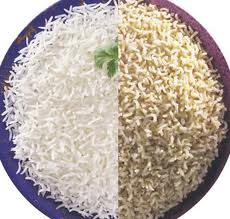
Back in the 1940s farmers used arsenic as a pesticide to treat soil, ward off moths, caterpillars, as a preservative for pressure treated wood, animal hides, in some glass manufacturing, and as an additive to harden lead and copper. It was also used to ward off diseases such as syphilis and psoriasis from the 1800s to early 1900s, while some arsenic is still used to treat an uncommon blood cancer known as acute promyelocytic leukemia . Although many years have come and gone it wasn’t until 2009 that the EPA banned it from being used as a pesticide.
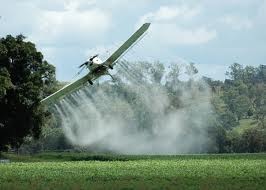
However, our soil has absorbed the arsenic and remains contaminated to this day. How is arsenic getting into Brown Rice Syrup, which claims to be a healthier substitute for sugar?
Rice is grown on farms where soil has previously been sprayed with arsenic to protect plants from insects. High levels of arsenic still present in the soil are then absorbed into our plants, grains, etc. later to be harvested.
Arsenic occurs in several forms, some thought to be more dangerous than others. Organic forms of arsenic can be found naturally in the soil, along with arsenic-based pesticides used before the EPA banned them in 2009. Rice, takes up more arsenic than all the other grains.
Inorganic arsenic is considered much more toxic than organic arsenic, causing cancer, skin lesions, cardiovascular disease, neurotoxicity and diabetes.
Brown rice is produced when the outermost layer of a grain of rice (the husk) is removed. To produce white rice, the next layers underneath the husk (the bran layer and the germ) are removed, leaving mostly the starchy endosperm. Brown rice has a larger concentration in total arsenic and inorganic arsenic than white rice because the outer layer that’s removed in white rice contains the inorganic arsenic. However, another form of arsenic can be found inside the grain of both white and brown rice.
Brown rice syrup, or rice syrup, is then made by culturing cooked rice with enzymes (to break down the starches), then straining off the liquid and reducing it by cooking until the desired consistency is reached. The final product is 45% maltose, 3% glucose, and 52% maltotriose. Even still, the arsenic in the brown rice remains after being converted to brown rice syrup.
Arsenic is found from baby foods to our water supply. The EPA sets standards for levels of arsenic allowed in water but there are no standards set for our foods – that needs to change! The question is, knowing that arsenic exists in these foods – will you continue to purchase them or eliminate them from your diet? With so many products and foods on the market it’s hard to know what’s safe anymore, even after reading the labels, and what to eliminate in my opinion. People still smoke, eat and drink foods known to have health risks. In the end, it’s your decision what to do once informed.
What are your thoughts? What will you do, if anything?
I’ve only touched on one issue while there are so many out there.
I’d love to hear your thoughts!
 Hi, I’m Vicki Bensinger! I have been teaching culinary classes throughout Missouri since 1992. I offer personalized private culinary classes for individuals and small groups in the comfort of your home or organization.
Hi, I’m Vicki Bensinger! I have been teaching culinary classes throughout Missouri since 1992. I offer personalized private culinary classes for individuals and small groups in the comfort of your home or organization.
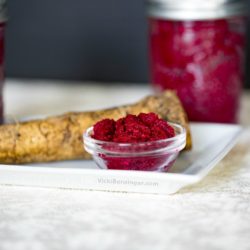
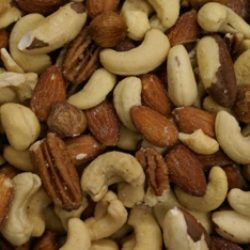
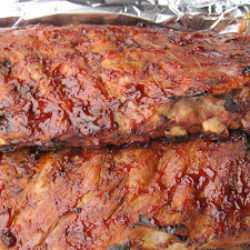
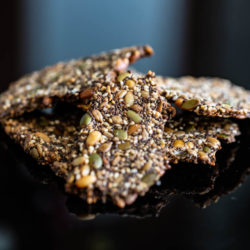
Wow! I have been somewhat out of the loop this week, so I had NO idea! I’ll be checking my pantry in the morning!
I found it in our granola bars, Goo gel and protein drink that my husband takes when biking which is at least 4x a week. Scary stuff. Makes me wonder what other crops absorb the arsenic.
So not more brown rice? o..man..that’s my favourite. ;-(
That is frighterning Vicki, not sure what we can do. I am trying to grow my own veggies etc. but it is difficult. Scary world and times.
Angie I suppose that’s up to you. That’s all I cook with anymore but now I’m going to try and find other alternatives.
When reading up on arsenic in foods I found far too many articles including eggs which I’m guessing comes from whatever the chickens are being fed. I think it’s in places we have no clue about.
I’m not sure there’s any good answer, just whatever you feel comfortable with.
Suzi – good luck with your veggies. I’m know there’s a way to test the soil for arsenic but I didn’t dig that far into what the steps were. Growing our own might help.
Thank you so much for this informative post!
News like this is so discouraging…in this case, it’s those who are trying to eat healthier who are getting hit the hardest.
As far as an email subscription, I’d sign up again…I’m going to try that, too…and hope it really works this time!
Dear Vicki,
This is very useful information and I think Australia is very stringent with regulations to avoid these incidents.
Ugh. It’s impossible to avoid arsenic. It’s a natural part of our environment and occurs naturally in some foods – but int such minute quantities it’s not a problem (with the possible exception of bitter almonds). This news, though, is distressing – no need to elevate our risk. Thanks for this – I was aware of the headlines, but missed the brown rice syrup connection. Time to check the labels. BTW, although brown rice has more nutrients than regular white rice, I’ve read converted rice (Uncle Ben’s) actually is similar (minus the fiber) in terms of nutrients as brown rice. That’s because the steaming process that happens when converted rice is made forces some of the nutrients into the rice kernels (nutrients that otherwise would be lost). For what that’s worth. Anyway, thanks for this. It’s depressing, but important.
I have a big jar of brown rice syrup sitting in my cupboard – not for long – I hadn’t heard – it makes you want to grow all your food – this is bad news:(
I questioned whether or not I should post this figuring most people had heard about this. Now I’m glad I did. Sorry about your big jar of Brown Rice Syrup British Mum. It’s a real bummer.
Kitchen Riff – thanks for sharing that info about white rice. Good to know.
Chopinand – maybe we should all move to Australia. I’ve always wanted to go there anyway. Now’s as good a time as any, especially if the food is healthier.
Lizzy I signed up again so I’ll let you know if I get your posts sent to me again.
I am not sure whether the products I used over has the content but this piece of infor is so knowledgeable.
We too have issues with some of the food products esp those from China and one of it was the imitation eggs and taufu made from cardboard which is even worse on the list.
Gonna check my products in the pantry now.
I have a box of brown rice that I have yet to open. No brown rice syrup though.
Home grown food is the best way to avoid things like this, but not all people can do that where they live.
This is a very informative post, thank you so much for sharing.
Wow, who would have thought? Thanks for these tip, yikes!
We can not totally eliminate these things from our diet.Every other day the research study changes. Just few days back I watched on Dr. OZ that apple juice contains arsenic. But it was not clear whether arsenic is found in soil,air or water where the apples grow. Even if arsenic is found in these foods it might be in lower levels.
Thanks for sharing the information. That’s what I like about this food blog world.
I really haven’t followed this arsenic story so I appreciate the information. Horrible to hear about the levels of arsenic in baby food, yikes!
It was great that you mentioned about this because I wasn’t aware of it. It’s a really good question what I would do, and this is probably only one out of millions, but how far do we take it serious? I think we’ll go crazy if we eliminate everything that’s questionable… I just read what Balvinder said… I think she got a point. Thanks ladies.
I agree that we could go crazy eliminating foods that they say are contaminated with one thing or another, since so many things have harmful substances in them.
In articles that I read the EPA and FDA are hopefully going to start setting standards for how much arsenic and other toxic substances are allowable in our foods.
Bottom line, it’s up to the consumer to do what they want – eliminate the food from their diet, limit the amounts they ingest, or continue eating it.
What we do have control of is trying to eat right and exercise to maintain as healthy of a lifestyle as we can.
Whoa! I totally missed this! Thanks for the heads up. I need to go check my pantry!